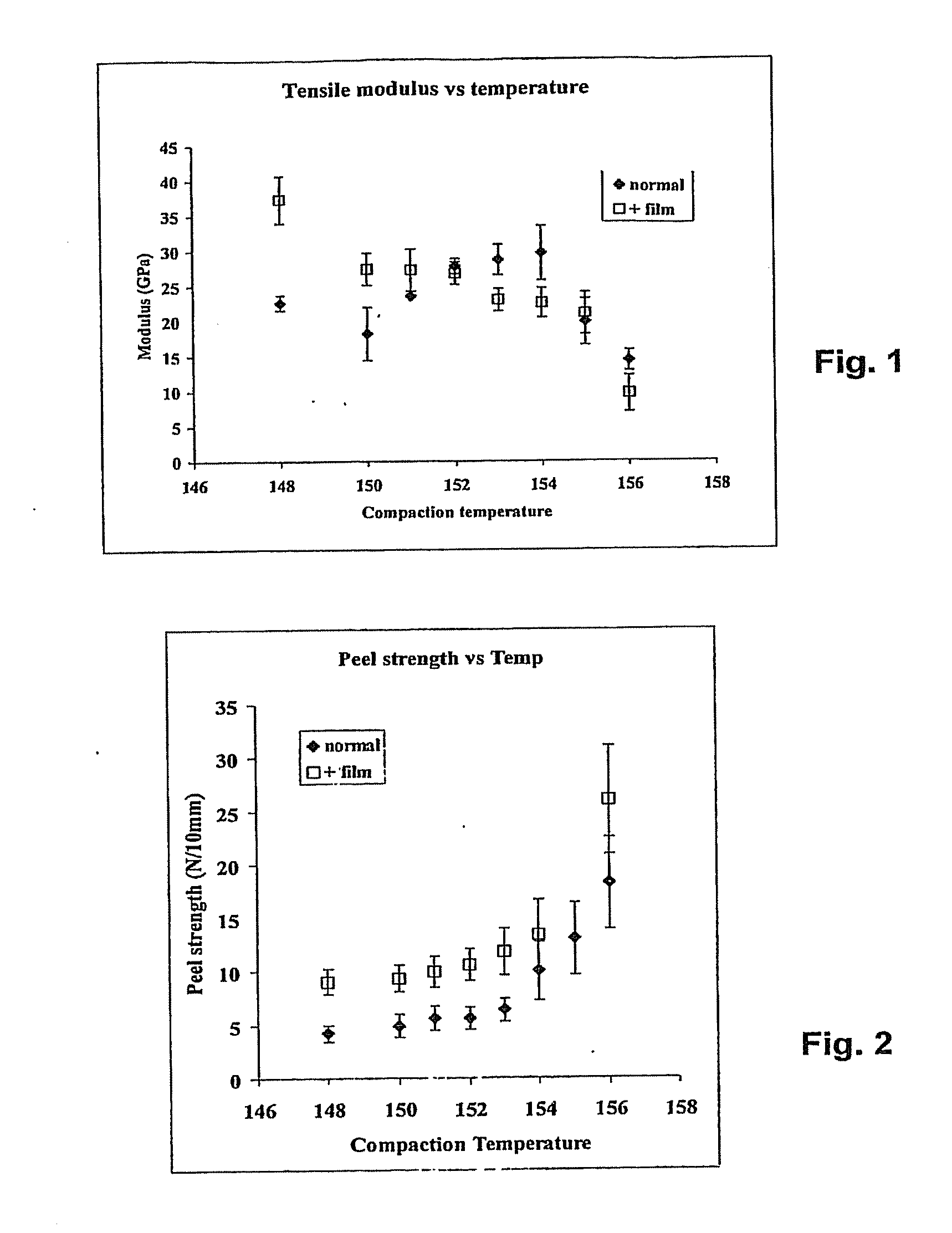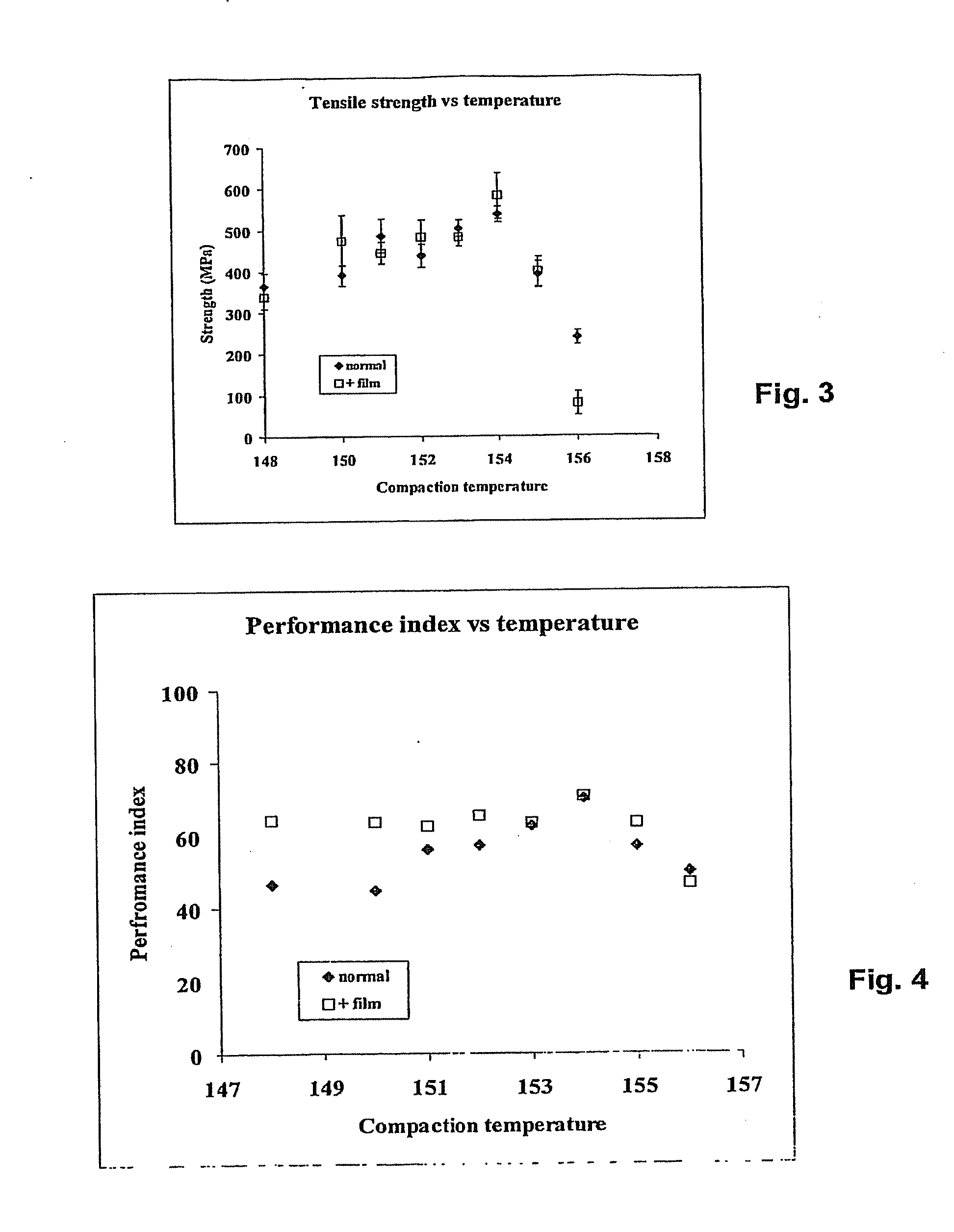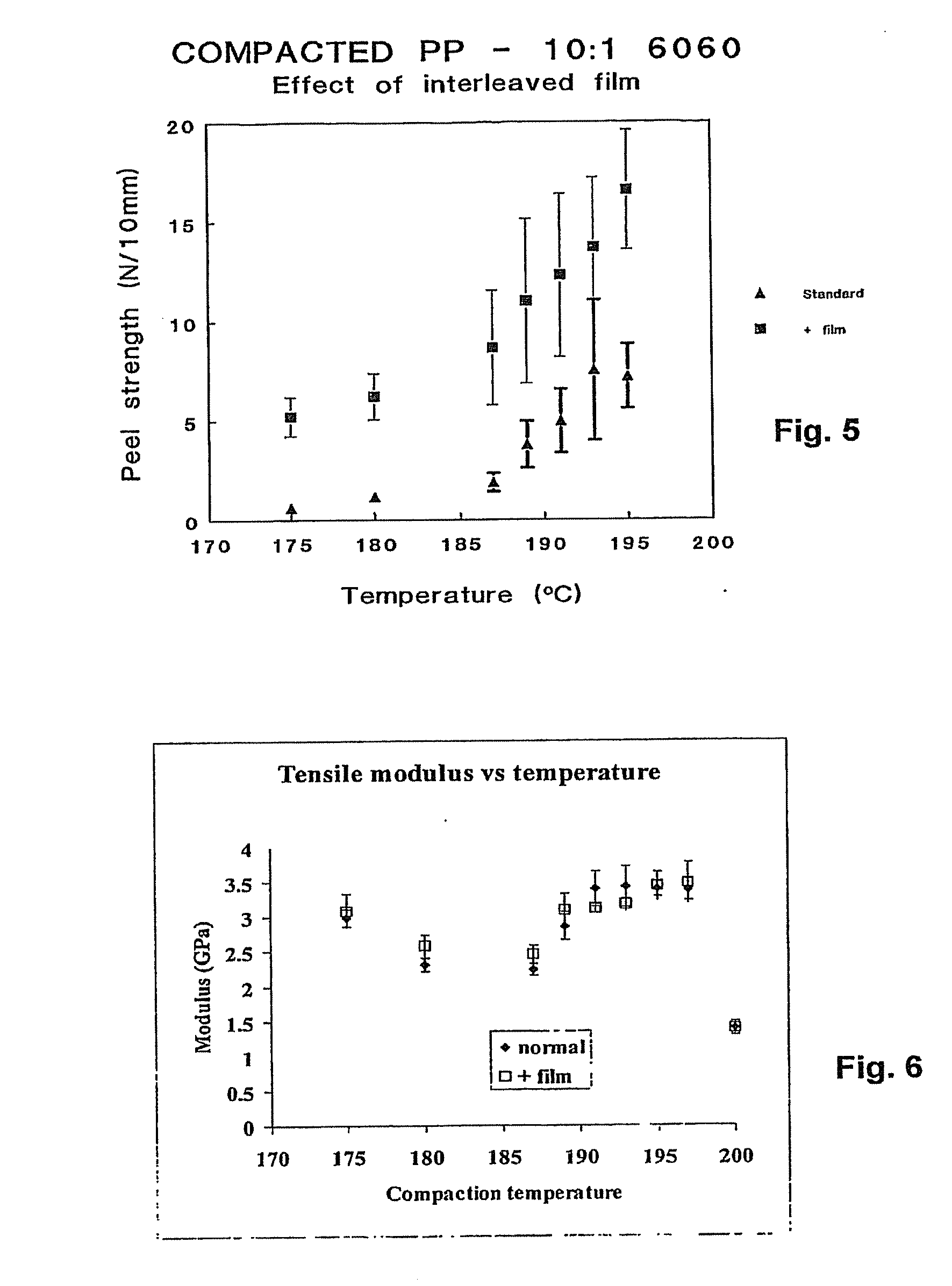Interlayer Hot Compaction
a technology of hot compaction and interlayers, which is applied in the direction of thermography, other domestic articles, transportation and packaging, etc., can solve the problems of poor mechanical properties, difficult to achieve the desired degree of partial melting of the outer regions of the strands, and narrow temperature span across which melting occurs, so as to reduce the criticality of the temperature of the compaction
- Summary
- Abstract
- Description
- Claims
- Application Information
AI Technical Summary
Benefits of technology
Problems solved by technology
Method used
Image
Examples
example set a
[0086]Fabric layers were woven, in a plain weave, from CERTRAN, a 250 denier multifilament yarn of melt spun filaments of oriented homopolymeric polyethylene available from Hoechst Celanese, and characterised as follows:
TABLE 1Tensile initialMolecular weightBreaking strengthsecantModulus 2%(Mw)(Mn)(GPa)(GPa)(GPa)130,00012,0001.35843
[0087]Samples, using two layers of woven cloth, were processed in a hot press using a two stage pressure process. An initial pressure of 0.7 MPa (100 psi) was applied while the assembly reached the compaction temperature. After a 2 minute dwell time at this temperature, a higher pressure of 2.8 MPa (400 psi) was applied for 1 minute upon which time the assembly was cooled at a rate of approximately 20° C. per minute to 100° C. Samples were made under three conditions. Firstly, standard compaction at a temperature of 138° C. Secondly, a layer of the LDPE film was laid between the two layers of woven cloth and then processed at 126° C. (above the melting po...
example set b
[0090]In these examples partially melted monolithic articles were prepared, using TENSYLON oriented polyethylene tape produced by Synthetic Industries, USA, having the following characteristics:
TABLE 3Tensile strength1.5 GPaTensile modulus 88 GPaDenier720
[0091]This was woven into a fabric. For the interlayer a polyethylene of closely similar type was obtained, FL5580 film grade from Borealis A / S, Denmark, melting point 130° C. This was extruded into a film approximately 10-15 μm in thickness, using a standard film extruder and film die.
[0092]Compaction experiments were carried out at a range of temperatures between the melting point of the film (approximately 130° C.) up to and including the normal compaction range for this material (148°-156° C.). The woven cloth was thin (areal density 83 g / m2) and to obtain an even pressure over the assembly during compaction rubber sheets were used inside the normal metal plates utilised for compaction, with soft aluminum foils between the rubbe...
example set c
[0098]The tests of this example employed the same materials, equipment and techniques as Example Set B. It provides a comparison of the properties of compacted sheets made at three temperatures: a normal compacted sample made at the standard optimum temperature of 154° C., an interlayer sample made at 152° C. and a comparison interlayer sample made at 135° C., which is enough to melt the interlayer but not any part of the TENSYLON tapes. The results are shown below.
TABLE 4AssemblyPeelTensileTensileSampletemperaturestrengthmodulusstrengthconfiguration(° C.)(N / 10 mm)(GPa)(MPa)Standard154 10 + 2.729.6 + 3.9535 + 55compactiontechnique(comparison)Woven PE cloth +15210.6 + 1.5 26.8 + 1.6483 + 28interlayerWoven PE cloth +1355.9 + 0.914.5 + 2.7283 + 25interlayer(comparison)
[0099]Compacting at a temperature just above the melting temperature of the interlayer but below the melting range of the oriented tapes (135° C.) gives modest mechanical properties. The sample made at 152° C. with the in...
PUM
| Property | Measurement | Unit |
|---|---|---|
| pressure | aaaaa | aaaaa |
| compaction pressure | aaaaa | aaaaa |
| thickness | aaaaa | aaaaa |
Abstract
Description
Claims
Application Information
 Login to View More
Login to View More - R&D
- Intellectual Property
- Life Sciences
- Materials
- Tech Scout
- Unparalleled Data Quality
- Higher Quality Content
- 60% Fewer Hallucinations
Browse by: Latest US Patents, China's latest patents, Technical Efficacy Thesaurus, Application Domain, Technology Topic, Popular Technical Reports.
© 2025 PatSnap. All rights reserved.Legal|Privacy policy|Modern Slavery Act Transparency Statement|Sitemap|About US| Contact US: help@patsnap.com



